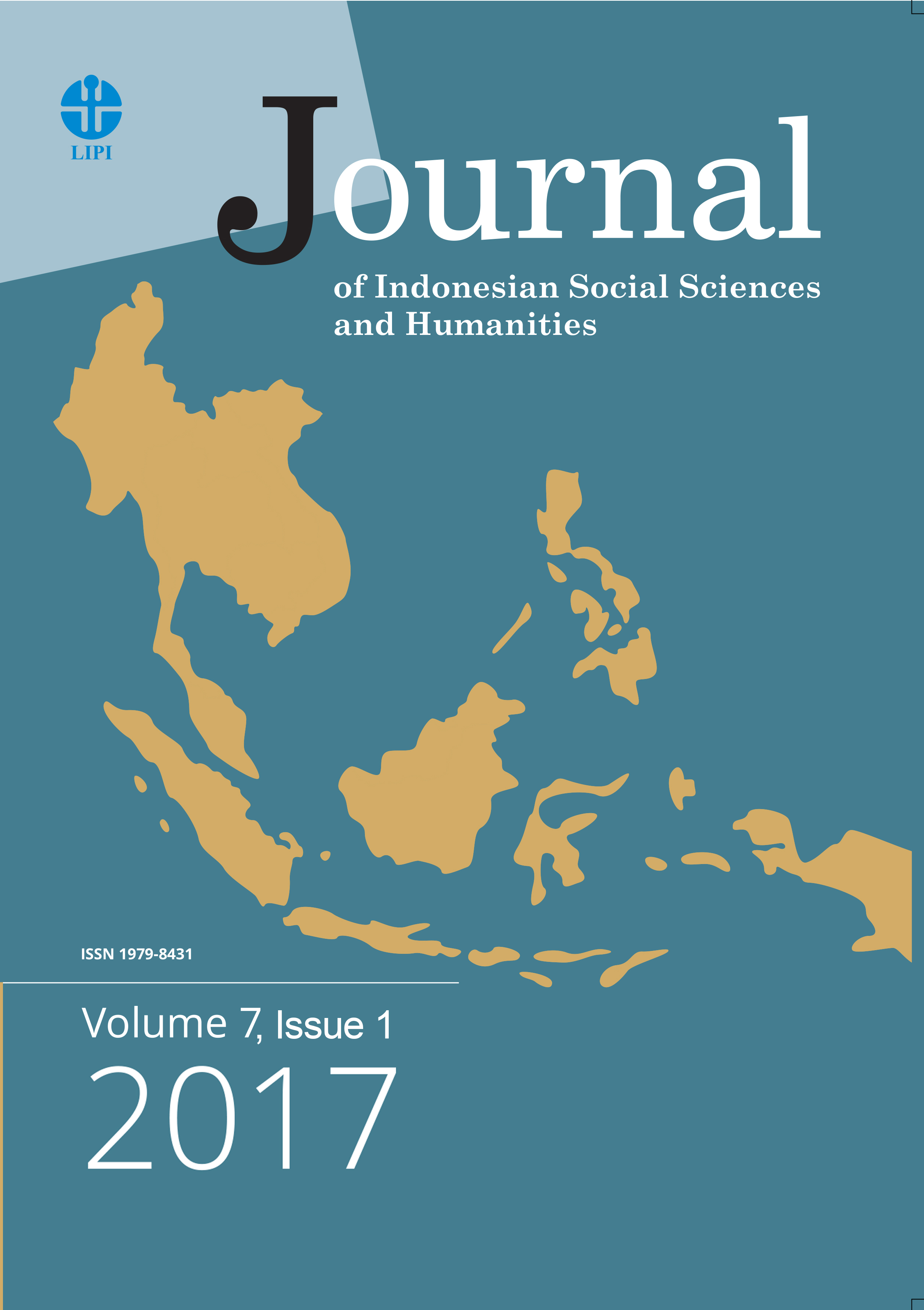Regional Security Complex in ASEAN: Neutrality and Centrality at Brink in the South China Sea Issue
Keywords:
South China Sea, Balance of Power, Regional Security Complex, International SystemAbstract
The South China Sea conflict has been a highly sensitive issue for the last 5 years in ASEAN. China and the US have been using the South China Sea as the “New Cold War Arena” of power and military hegemonic competition in the South East Asia region. This has been a major challenge for ASEAN as the only regional organization in the South East Asia region that has direct in the area must take major role in managing and resolving the dispute peacefully even though ASEAN has no defense pact like NATO. This paper argues that ASEAN, at this moment, must maintain its role as a mediator and independent-negotiator in the region but at the same time apply its principle of gradually adapting with the new international system. This article also suggests that in the future, ASEAN can take a major role in the governance of the South China Sea and the South East Asia region.
References
ASEAN Selayang Pandang. 2012. Kementerian Luar Negeri Republik Indonesia. Jakarta: Kemlu.
Archer, C. 2001. International Organizations. 3rd ed. London and New York: Routledge.
Buzan, B., Waever, O., Wilde, J.D. 1998. Security: A New Framework of Analysis. London: Lynne Rienner Publisher.
Buzan, B. 2002. The Asia-Pacific: what sort of region in what sort of world? In A. McGrew & C, Brook (Eds.), Asia-Pacific in the New World Order (p. 71). London and New York: The Open University.
Carr, E.H. 1974. The Twenty Years’ Crisis 1919-1939. London: The Macmillan Press Ltd.
Chanboreth, E dan Hach, S. 2008. Aid Effectiveness in Cambodia. Brookings: Wolfenshon Center for Development.
Goldstein, J. S. 2003. International Relations. 5th ed. New York: Longman.
Farrel, M., Hettne, B., And Langenhove, L, K. (Eds). (2005). Global Politics of Regionalism: Theory And Practice, Pluto Press, London.
Holsti, K. J. 1995. International Politics; a Framework for Analysis. New Jersey: Prentice Hall.
Indraswari, R. 2012. Memproyeksikan Norma Intramural ASEAN ke Area Extramural: Keberhasilan TAC di Laut China Selatan?. Yogyakarta: PSSAT UGM.
Jackson, R & Sorensen, G. 1999. Introduction to International Relations. New York: Oxford University Press.
Johnson, C & Keehn E.B. 1995. East Asian Security; The Pentagon’s Ossified Strategy. Foreign Affairs; 74(4); ABI/INFORM Global, p. 104.
Kegley, W. C., Raymond, A, G. 1994. A Multipolar Peace?; Great-Power Politics in the Twenty-first Century. New York: St. Martin’s Press.
Keohane, R & Nye, J. 1989. Power and Interdependence. 2nd ed. London: Scott, Foresman and Company.
Kegley, W. C. dan Wittkopf, Eugene R. 1997. World Politics: Trends and Transformation. New York: St Martin’s Press
Kristina Jönsson, “Unity-in-Diversity? Regional Identity Building in Southeast Asia”, Working Paper No 29, Centre for East and South-East Asian Studies, Lund University, Sweden, 2008, pp: 9-10
Little, R,. 1997. International Regimes. In J, Baylis, & S, Smith (Eds.). The Globalization of World Politics; An Introduction to International Relations. (p. 236). Oxford: University Press.
Maswood, J. 2002. The Rise of The Asia-Pacific. In C. McGrew, A & Brook, C, (Eds.), Asia Pacific in the New World Order (p. 62). London and New York: Routledge.
McGrew, A. 2002. Restructuring foreign and defence policy: the USA. In A. McGrew, & C, Brook (Eds.), Asia Pacific in the New World Order (pp. 167-168). London and New York: The Open University.
Maull, W.H. 1990 Foreign Affairs, Germany and Japan: The New Civilian Powers 69(5), p. 93.
Nesadurai, H. “The Global Politics Of Regionalism: Asia And The Asia-Pacific” In Mary Farrell, Björn Hettne, And Luk Van Langenhove (Eds) Global Politics Of Regionalism: Theory And Practice, Pluto Press, London, 2005, pp: 165-166.
Nye, J, S. 1995. East Asian Security; The Case for Deep Engagement. Foreign Affairs, 74(4), pp. 90-93.
Waltz, K. 1979. Theory of International Politics. New York: McGraw-Hill, Inc.
Winarno, B. 2011. Isu-Isu Global Kontemporer. Yogyakarta: CAPS.
Yahuda, M. 2004. The International Politics of the Asia-Pacific. London and New York: RoutledgeCurzon, Taylor & Francis Group.
Downloads
Published
Issue
Section
License

This work is licensed under a Creative Commons Attribution-ShareAlike 4.0 International License.
Authors who publish with this journal agree to the following terms:
1. Authors retain copyright and grant the journal right of first publication with the work simultaneously licensed under an Attribution-ShareAlike 4.0 International (CC BY-SA 4.0) license. This license allows others to remix, adapt, and build upon the work, as long as they credit the author and license their new creations under the same terms.
2. Authors may enter into separate, additional contractual arrangements for the non-exclusive distribution of the journal’s published version of the work (e.g., posting it to an institutional repository or including it in a book), provided there is an acknowledgment of its initial publication in this journal.
3. Authors are permitted and encouraged to post their work online (e.g., in institutional repositories or on their personal website) prior to and during the submission process, as this can lead to productive exchanges and increase citations of the published work (See The Effect of Open Access ).


















